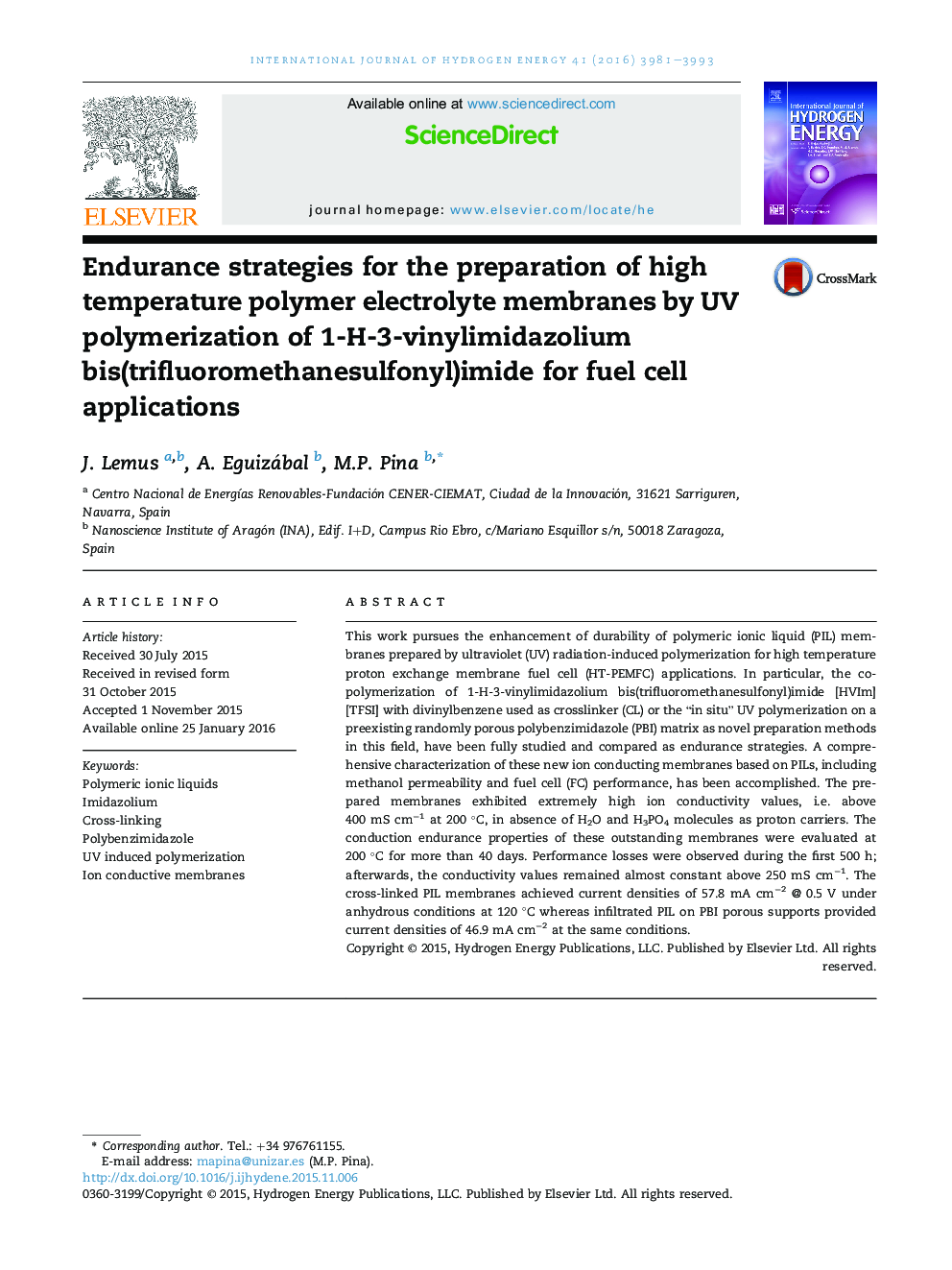| Article ID | Journal | Published Year | Pages | File Type |
|---|---|---|---|---|
| 1277928 | International Journal of Hydrogen Energy | 2016 | 13 Pages |
•Highly conductive composite polymer ionic liquid membranes.•In situ UV polymerization of ionic liquids into porous polybenzimidazole.•Conductivity values of membranes remain almost constant at above 250 mS cm−1.•The conduction endurance properties evaluated at 200 °C for more than 40 days.
This work pursues the enhancement of durability of polymeric ionic liquid (PIL) membranes prepared by ultraviolet (UV) radiation-induced polymerization for high temperature proton exchange membrane fuel cell (HT-PEMFC) applications. In particular, the co-polymerization of 1-H-3-vinylimidazolium bis(trifluoromethanesulfonyl)imide [HVIm][TFSI] with divinylbenzene used as crosslinker (CL) or the “in situ” UV polymerization on a preexisting randomly porous polybenzimidazole (PBI) matrix as novel preparation methods in this field, have been fully studied and compared as endurance strategies. A comprehensive characterization of these new ion conducting membranes based on PILs, including methanol permeability and fuel cell (FC) performance, has been accomplished. The prepared membranes exhibited extremely high ion conductivity values, i.e. above 400 mS cm−1 at 200 °C, in absence of H2O and H3PO4 molecules as proton carriers. The conduction endurance properties of these outstanding membranes were evaluated at 200 °C for more than 40 days. Performance losses were observed during the first 500 h; afterwards, the conductivity values remained almost constant above 250 mS cm−1. The cross-linked PIL membranes achieved current densities of 57.8 mA cm−2 @ 0.5 V under anhydrous conditions at 120 °C whereas infiltrated PIL on PBI porous supports provided current densities of 46.9 mA cm−2 at the same conditions.
